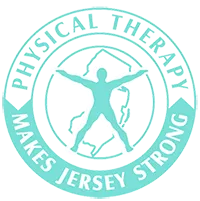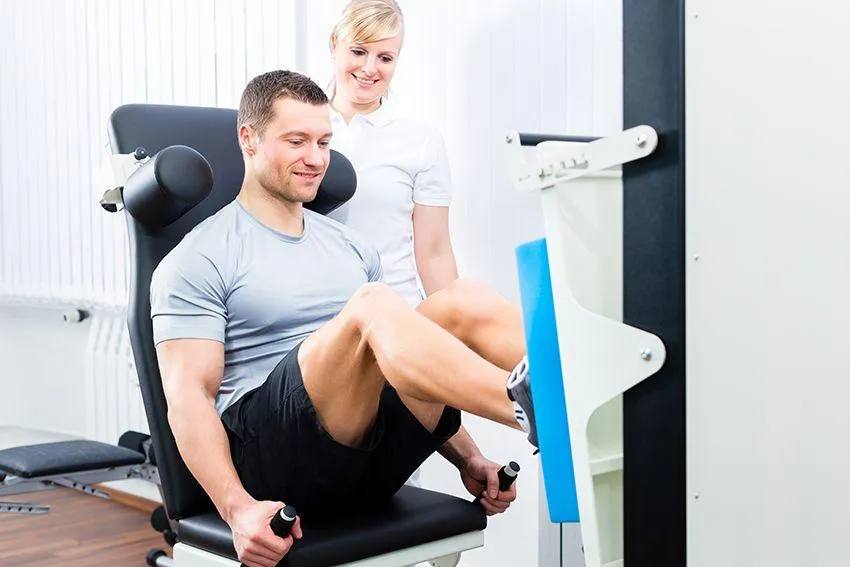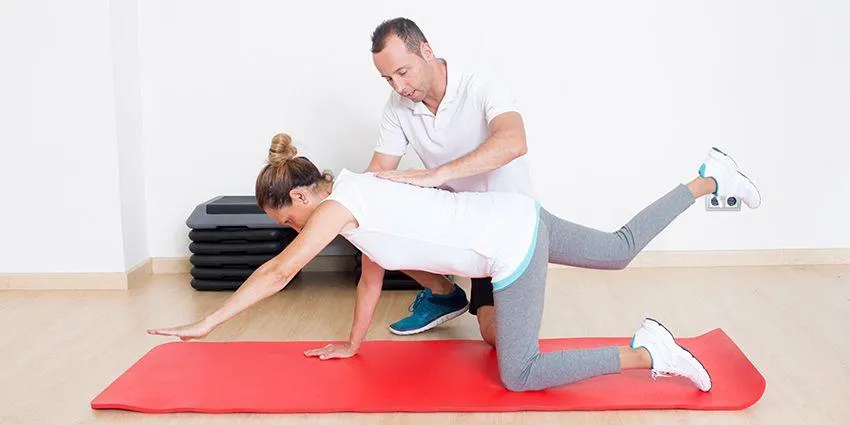New Jersey Rehab Experts
Specializing in comprehensive orthopedic care, New Jersey Rehab Experts offers a wide range of services including Physical Therapy, Sports Physical Therapy, Dry Needling, Chiropractic Care, Neuropathy Treatment, Pain Management, and Manual Therapy. Our state-of-the-art facility is staffed by board-certified therapists dedicated to delivering top-tier care, ensuring you achieve optimal recovery and wellness.
Clinic Located in Jersey City (Newport), Secaucus and Clifton
Genuine Feedback from
Our Patients
Our Affiliations






Explore Our Diverse Range of Disciplines
Discover a world of exceptional care customized for all ages! Our dedicated professionals deliver top-notch medical attention, expert rehabilitative therapy, and warm companion care for adults, seniors, and young patients. Experience personalized healthcare with a heart!

Orthopedic Physical Therapy
Specialized care for musculoskeletal injuries, surgeries, and chronic conditions affecting bones, joints, muscles, ligaments, and tendons.
- Sports injuries
- Arthritis management
- Post-surgical rehab

Geriatric Physical Therapy
Specialized care for older adults, addressing age-related changes affecting balance, strength, mobility, and independence.
- Fall prevention
- Balance training
- Mobility enhancement

Sports Physical Therapy
Specialized rehab for athletes of all levels, from weekend warriors to professionals, focusing on injury recovery and performance enhancement.
- ACL rehab
- Return-to-play testing
- Performance optimization

Vestibular Rehabilitation
Specialized therapy for dizziness, vertigo, and balance disorders stemming from inner ear and balance system dysfunction.
- BPPV treatment
- Balance retraining
- Dizziness management

Men's Health Physical Therapy
Specialized care for pelvic floor dysfunction and related issues, providing discreet, effective treatment for men's specific health needs.
- Pelvic pain relief
- Post-prostatectomy rehab
- Urinary dysfunction

Motor Vehicle & Work Injury Rehab
Specialized care for car accidents and workplace injuries, with expert documentation and coordination with insurance providers.
- Whiplash treatment
- Workers' comp cases
- Personal injury claims

Manual Therapy
Hands-on approach using specialized techniques to relieve pain, improve mobility, and accelerate healing naturally.
- Mulligan Mobilizations
- McKenzie Method
- Myofascial Release

Dry Needling
Modern technique using thin, sterile needles to target trigger points, releasing muscle tension and restoring normal function.
- Back & neck pain
- Headaches & migraines
- Sports injuries
Ready to start your recovery journey?
Our expert therapists are ready to help you live pain-free and regain your mobility.
Our Advantages
Specialized Programs for Every Need
From orthopedic rehab and sports therapy to vestibular, pelvic health, and post-injury recovery, we provide comprehensive, patient-focused solutions.
State-of-the-Art Techniques & Technology
We use cutting-edge treatments like dry needling, spinal manipulation, Mulligan & McKenzie techniques, Fit3D scans, Shockwave Therapy , Cupping and more to accelerate healing.
Personalized One-on-One Care
Every patient receives individualized treatment plans with hands-on attention to ensure faster recovery and long-term results.
Trusted by Athletes & Community Leaders
Official providers for multiple cricket teams and a member of respected healthcare associations—our reputation speaks for itself.
Multiple Convenient Locations Across NJ
With clinics in Jersey City, Secaucus, Clifton , and beyond, we’re always within reach—offering flexible scheduling and bilingual support.
Seamless Support for Injury Claims & Recovery
We coordinate care with attorneys, physicians, and insurers for patients recovering from motor vehicle or work-related injuries, ensuring smooth documentation and stress-free rehab.
Meet Our Team

Sunny Thakkar PT, MS ( Exercise Physiologist)
Physical Therapist

Ashish Sinha, PT, DPT
Physical Therapist

Dr. Rohit Farzala PT, DPT
Physical Therapist
About Us


Experience rapid rejuvenation as our specialist team harnesses the power of advanced healing tech to erase pain with ease. We dive deep into your world, assessing every piece of the puzzle—stress at work, life pressures, physical health, nutrition, genes, posture, and even emotional ties—crafting a tailor-made wellness blueprint that's as unique as you are. With our dedicated holistic touch, we don't just treat symptoms; we empower you to embrace a pain-free, harmonious life.
Ask a Question

5 Effective Strategies to Banish Side Cramps While Running: Your Ultimate Guide to Pain-Free Miles
5 Effective Strategies to Banish Side Cramps While Running: Your Ultimate Guide to Pain-Free Miles
Running is liberating, but for many, side cramps can turn a joyful jog into a painful struggle. If you’ve ever found yourself halting mid-run, clutching your side as those sharp pains take over, you’re not alone. Understanding how to effectively banish side cramps can elevate your running experience, allowing you to enjoy every mile rather than dread the next. In this ultimate guide, we’ll share five proven strategies to tackle those pesky cramps head-on, paving the way for pain-free runs. Whether you’re a seasoned marathoner or a casual jogger, these tips will help you run with comfort and confidence. Say goodbye to interruptions and hello to uninterrupted strides as we explore solutions that transform your running journey. Lace up your shoes and get ready to conquer the road ahead!
Understanding Side Cramps: What Causes Them?
Side cramps, often referred to as side stitches, are a common issue for runners. These sharp, stabbing pains typically occur just below the ribs and can be debilitating enough to halt a run. Understanding the root causes of side cramps is the first step towards preventing them. There are several theories about what triggers these uncomfortable episodes, ranging from muscle spasms to blood flow issues, but the exact cause remains somewhat elusive.
One prevalent theory suggests that side cramps are caused by a spasm of the diaphragm, the muscle that plays a crucial role in breathing. During vigorous exercise like running, the diaphragm works harder and may become fatigued, leading to spasms and subsequent pain. This is particularly likely when breathing is shallow or irregular, which can happen if you're pushing yourself too hard or not breathing efficiently.
Another possible cause of side cramps is related to the ligaments that attach the diaphragm to the internal organs. When you run, the bouncing motion can cause these ligaments to stretch, especially if your stomach is full or you’ve consumed a lot of fluids. This stretching can put strain on the diaphragm and result in those sharp, painful cramps. Additionally, poor running posture and weak core muscles may contribute to the problem by not providing adequate support to these areas during physical exertion.
The Importance of Proper Hydration Before Running
Proper hydration is crucial for all athletes, but it’s especially important for runners looking to avoid side cramps. Dehydration can lead to muscle cramps, including those that occur in the diaphragm. Ensuring you’re adequately hydrated before you start running can make a significant difference in your overall performance and comfort.
Ideally, you should start hydrating well before your run begins. Drinking water consistently throughout the day helps maintain optimal hydration levels. It's recommended to drink at least 16-20 ounces of water about two hours before exercising. This gives your body enough time to absorb the fluids and reduces the risk of feeling bloated or needing a bathroom break mid-run.
However, it's not just about how much you drink, but also what you drink. While water is essential, sports drinks containing electrolytes can also be beneficial, especially for longer runs or in hot weather conditions. Electrolytes such as sodium, potassium, and magnesium help maintain fluid balance and prevent muscle cramps. Just be cautious not to overdo it, as too much liquid in your stomach can contribute to the very side cramps you're trying to avoid.
Pre-Run Nutrition: What to Eat and When
What you eat before a run can have a significant impact on whether or not you experience side cramps. Eating the right foods at the right times can help you fuel your body without causing discomfort. The key is to find a balance between providing enough energy and not overloading your digestive system.
Aim to eat a balanced meal containing carbohydrates, protein, and a small amount of fat about three to four hours before your run. Carbohydrates will provide the necessary energy, while protein and fat will help sustain your energy levels throughout the activity. Some good options include a turkey sandwich on whole-grain bread, oatmeal with fruit and nuts, or a smoothie made with yogurt and berries.
If you need a snack closer to your run, choose something light and easy to digest, such as a banana, a handful of pretzels, or a small energy bar. Try to avoid high-fiber foods and fatty or greasy foods, as they can take longer to digest and may cause gastrointestinal distress. It's also important to experiment with different foods and timing during your training runs to see what works best for your body.
Warm-Up Techniques to Prevent Side Cramps
Warming up properly before a run is essential for preventing side cramps. A good warm-up routine helps prepare your muscles and cardiovascular system for the demands of running, reducing the risk of cramps and other injuries. It also helps increase blood flow to the muscles, making them more flexible and less prone to spasms.
Start your warm-up with some dynamic stretching exercises. These are movements that gently stretch your muscles while keeping them active, such as leg swings, arm circles, and walking lunges. Dynamic stretches help increase your range of motion and get your muscles ready for the repetitive motion of running. Aim to spend about 5-10 minutes on these exercises.
After dynamic stretching, transition to a light jog or brisk walk for another 5-10 minutes. This helps gradually increase your heart rate and body temperature, further preparing your muscles and cardiovascular system for the run ahead. Incorporating some strides, or short bursts of faster running, can also be beneficial. Strides help activate the fast-twitch muscle fibers and improve your overall running form and efficiency.
Breathing Techniques: Mastering Your Breath While Running
Proper breathing techniques are crucial for preventing side cramps while running. Many runners tend to breathe shallowly or irregularly, which can lead to diaphragm fatigue and cramping. By focusing on deep, rhythmic breathing, you can ensure that your diaphragm is working efficiently and reduce the risk of cramps.
One effective breathing technique is diaphragmatic breathing, also known as belly breathing. This involves taking deep breaths that fill your lungs and expand your diaphragm, rather than just your chest. To practice diaphragmatic breathing, place one hand on your chest and the other on your belly. As you inhale, focus on expanding your belly, rather than your chest. This helps ensure that your diaphragm is doing the work and not becoming fatigued.
Another helpful technique is to synchronize your breathing with your strides. For example, you might inhale for three strides and exhale for two strides. This creates a consistent breathing pattern and helps ensure that you're getting enough oxygen. Experiment with different ratios to see what feels most comfortable for you. Additionally, try to relax your upper body and shoulders while running, as tension in these areas can restrict your breathing and contribute to cramps.
Running Form: How Your Posture Affects Cramps
Your running form and posture play a significant role in whether or not you experience side cramps. Poor running form can put unnecessary strain on your muscles and ligaments, increasing the likelihood of cramps. By focusing on maintaining proper posture and form, you can reduce the risk of side cramps and improve your overall running efficiency.
One key aspect of good running form is maintaining an upright posture. Keep your head up, shoulders relaxed, and back straight. Avoid leaning too far forward or backward, as this can put extra stress on your diaphragm and other muscles. Your arms should be bent at a 90-degree angle and swing naturally at your sides, helping to maintain balance and rhythm.
Another important factor is your stride length and cadence. Overstriding, or taking steps that are too long, can cause your body to bounce up and down excessively, increasing the strain on your diaphragm and ligaments. Instead, aim for a shorter, quicker stride that keeps your feet landing directly under your body. This helps reduce the impact on your muscles and joints and promotes a smoother, more efficient running motion.
Stretching and Strengthening Exercises for Runners
Incorporating stretching and strengthening exercises into your routine can help prevent side cramps and improve your overall running performance. Stretching helps increase flexibility and range of motion, while strengthening exercises help build the muscles needed to support your running form and reduce the risk of cramps.
Start with some gentle static stretches after your run to help relax your muscles and improve flexibility. Focus on stretching the muscles that are most prone to tightness, such as your calves, hamstrings, and hip flexors. Hold each stretch for at least 30 seconds, and avoid bouncing or forcing the stretch, as this can cause injury.
In addition to stretching, incorporate strengthening exercises that target your core, hips, and legs. A strong core provides better stability and support for your diaphragm and other muscles involved in breathing. Some effective core exercises include planks, Russian twists, and bicycle crunches. For your hips and legs, try exercises like squats, lunges, and leg lifts. Aim to include these exercises in your routine at least two to three times per week.
When to Seek Medical Advice for Persistent Cramps
While most side cramps can be managed with the strategies mentioned above, there are times when it’s important to seek medical advice. Persistent or severe cramps that don’t improve with these methods may indicate an underlying medical condition that requires professional evaluation and treatment.
If you experience side cramps that are accompanied by other symptoms, such as nausea, vomiting, dizziness, or chest pain, it’s important to seek medical attention immediately. These symptoms could be signs of a more serious condition, such as a heart attack or gastrointestinal issue, and should not be ignored.
Additionally, if your side cramps persist despite trying various prevention techniques, it may be helpful to consult with a healthcare professional, such as a sports medicine doctor or physical therapist. They can help identify any underlying issues, such as muscle imbalances or biomechanical problems, and provide personalized recommendations for treatment and prevention.
Real-Life Success Stories: Runners Who Overcame Side Cramps
Hearing from other runners who have successfully overcome side cramps can be inspiring and motivating. Their stories can provide valuable insights and encouragement for those struggling with similar issues. Here are a few real-life success stories from runners who conquered side cramps and improved their running experience.
Jane, a recreational runner, used to suffer from debilitating side cramps during her long runs. After experimenting with different hydration and nutrition strategies, she discovered that drinking a mix of water and electrolyte drinks, along with eating a small snack an hour before her run, made a significant difference. She also incorporated regular core strengthening exercises and focused on maintaining a consistent breathing pattern. As a result, Jane was able to complete her first half marathon without any side cramps.
Tom, an experienced marathoner, struggled with side cramps during his speed workouts. He found that improving his running form and posture helped alleviate the problem. By working with a running coach, Tom learned to keep his body more relaxed and his strides shorter and quicker. He also started practicing diaphragmatic breathing and incorporating dynamic stretches into his warm-up routine. With these changes, Tom was able to complete his speed workouts without any interruptions from side cramps.
Emily, a beginner runner, experienced side cramps almost every time she ran. After seeking advice from a physical therapist, she learned that her weak core and poor posture were contributing factors. Emily began a targeted strength training program and focused on improving her running form. She also started paying more attention to her hydration and nutrition, making sure to drink plenty of water and eat light, easily digestible snacks before her runs. Over time, Emily noticed a significant reduction in side cramps and was able to run longer distances with greater comfort.
Conclusion: Embrace Pain-Free Running with These Strategies
Side cramps can be a frustrating and painful obstacle for runners, but with the right strategies, they can be effectively managed and even prevented. By understanding the causes of side cramps and implementing the tips and techniques discussed in this guide, you can enjoy pain-free runs and improve your overall running experience.
Proper hydration, balanced nutrition, and a good warm-up routine are essential for preventing side cramps. Additionally, focusing on your breathing, maintaining proper running form, and incorporating stretching and strengthening exercises can help reduce the risk of cramps and enhance your performance. If you experience persistent or severe cramps, don't hesitate to seek medical advice to rule out any underlying conditions.
Remember, every runner is different, and it may take some experimentation to find the strategies that work best for you. Stay patient and consistent, and soon you'll be able to run with greater comfort and confidence. Lace up your shoes and hit the road, knowing that you have the tools to conquer side cramps and enjoy every mile. Happy running!
No matter whether your condition was caused by a sport, work accident or otherwise,
we welcome the chance to serve you.
Opening Hours





